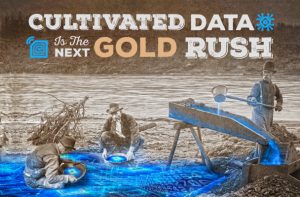The practice of science is about progress: Crafting knowledge out of hunches and experiments, finding life-saving remedies, informing sound policies. It doesn’t always go as planned.
Scientists would have struggled to predict, for example, that the Human Genome Project would decades later yield powerful tools for badge-wearing detectives, or that the 19th-century search for a sustainable alternative to elephant ivory would propel a boom in plastics that then contaminated every corner of the natural world. The good, the bad, the unintended—the biggest breakthroughs have a way of slipping out of their prescribed boxes.
This year was no different. Below are some of the most notable science-fueled events that shaped the world in 2019.
Who Loves Genealogy? The Police
Over the last decade, millions of people spat into DNA test kits and contributed their deepest genetic secrets to huge, searchable databases of family trees. That turned out to be awfully handy for police, who are increasingly using the same algorithms that can locate biological parents and long-lost cousins to solve crimes. Following a landmark break in the cold case of the Golden State Killer in 2018, police have since used family tree forensics to identify suspects in dozens more cases. This year, the technique passed its first legal test and secured both its first conviction and its first exoneration.
A lucrative industry has now spun up to support these investigations. In December, a forensic DNA firm acquired the public genealogy site GEDmatch, which had been key to cracking the GSK case (and many others since). The police and FBI also gained access to a database owned by FamilyTreeDNA, at first without users’ knowledge. Another private forensics lab, in Texas, began building its own crowdsourced database exclusively for police searches this year.
Another sign the emerging crime-fighting tool is here to stay? In September, the Department of Justice introduced guidelines for how law enforcement should use genealogy. They only cover federal or federally funded investigations, but the move signals that genealogy’s future (as well as that of your genetic privacy) will forever be entwined with policing.—Megan Molteni
The Jeffrey Epstein Effect
The names over the doors were already, as they say, problematic. But when the child rapist Jeffrey Epstein died, and more of his nominally philanthropic donations became public, science faced a reckoning. Nobody was surprised that billionaires sometimes donate money to wash away their reputational sins. A Sackler Gallery here (opioids), a Koch Biology Building there (petrochemicals and climate change denialism), and pretty soon you’re talking about real money.
Epstein’s donations—the ones that came after his 2008 conviction for trafficking minors, at least—shared the traits of both specificity and anonymity. Epstein was into science, albeit eugenics and weird theories of physics based on capitalism. It’s nice when your hobbies overlap. Still, famed biologists cashed his checks. Bill Gates took a meeting. An influential TED-talking clique kept going to his parties. And the head of MIT’s Media Lab dialed Epstein for dollars—secretly, because he knew the guy was a monster.
Seems bad, right? People who do science will rush to tell you they’re better than that—pursuing truth, untangling big questions. But the Epstein scandal showed in some matters, rich people decide what questions science asks, and which people get to ask them. This kind of greed means scientific results are subject to justifiable skepticism at the exact moment that anti-science forces benefit the most from cynicism about science’s ability to discern truth. For science as a practice to retain its credibility, it’s time to give back some money—and wipe some names off the buildings.—Adam Rogers
The Real Climate Warriors Emerge
The image of a teen with double braids standing at a podium, berating suit-wearing adults more than twice her age, is now so familiar, it’s easy to forget that little more than a year has passed since Greta Thunberg began the school strikes that kicked off a global climate protest movement.
Last March, more than a million young people participated in the youth climate strike that grew out of her efforts. In New York in August, hundreds of greeters cheered the arrival of Thunberg’s boat as it concluded its emissions-free, two-week journey across the Atlantic. In December at the annual climate conference known as COP, youth protesters swarmed the conference center where world leaders gathered.
These youngsters are not scientists. They are neither politicians nor billionaires. They belong to a cohort that in some ways matters most of all: They’re active participants in democracy, goading adults out of their complacent stupor and revving the engine of behavior change. Only once voters, en masse, start pressuring their leaders and shaming polluting companies will countries take sufficient steps to move the planet off its red-hot burner.
We don’t yet know what the youth movement’s political impact will be. In Madrid earlier this month, Thunberg herself said her school protest movement has “achieved nothing,” because emissions continue to climb. It is perhaps too soon to pass such judgement, but here’s hoping 2020 proves her wrong.—Sandra Upson
Much Ado About Vaping
For years, parents and public health workers have worried about e-cigarettes’ surging popularity among teens. But it was only in 2019 that the rechargeable little nicotine sticks triggered a nationwide panic attack. Study after study revealed a host of e-cig harms: They can impede the vascular system, weaken the lungs’ immune system, contain toxic flavorings, and potentially put users at risk for respiratory diseases like emphysema. This year’s National Youth Tobacco Survey revealed more than 5 million teenagers use e-cigarettes, a jump of more than 20 percent over the previous year. Add to that a spate of mysterious vaping-related lung illnesses that blanketed the country, killing 48 and putting thousands in the hospital, and you have the perfect formula for regulation.
To a degree, that’s what happened. The House held hearings, the White House promised action. Several states passed legislation prohibiting the sale of flavored e-cigarettes. San Francisco and other cities banned e-cigarettes entirely. Juul’s valuation lost billions amid scrutiny from the Food and Drug Administration, the Federal Trade Commission, and federal prosecutors in California.
Still, the debate rages on. Some public health experts say we should keep e-cigs on the market as the lesser of two evils. The FDA has yet to weigh in, though in May 2020 it will begin reviewing the gadgets and deciding whether they can stay on shelves.—Sara Harrison
The Microplastic Menace
When we say, “boy, it sure was a big year for X,” usually we’re talking about something rosy—great progress for space exploration or gay rights or self-driving cars. Microplastics research is a glaring exception. The past year has seen an explosion of studies revealing how nearly every nook and cranny of the planet is now tainted by microplastics: they’re blowing into the Arctic, swirling in the oceans, and entering the San Francisco Bay to the tune of 7 trillion pieces a year.
So why are we just now learning all this? For one, the field has improved its techniques for collecting and counting the bits of debris. Whereas previously researchers had to tally the particles by hand, now they let lasers do the work. And two, an informational feedback loop has brought in an avalanche of funding: A scary microplastics study comes out, the media reports on it, people get upset, and governments take action.
I’d love to tell you things will look better for Planet Earth in the coming year, but prepare for more studies showing the omnipresence of microplastic in the environment. The next phase will be to better discern what the particles might be doing to the human body. Sorry I don’t have better news for you.—Matt Simon
Turning the Tide on Ebola
Nearly 17 months after Ebola broke out in the Democratic Republic of the Congo, the epidemic has finally turned. As of December, the virus had infected at least 3,340 people and killed more than 2,200—but things could have been much, much worse. The difference? Experimental new drugs and vaccines reached the front lines, and they worked.
Starting in August 2018, health care workers began administering a single-dose vaccine called Ervebo to those at high risk of encountering Ebola; more than 250,000 people have since received it. The shot, which is manufactured by Merck, turned out to be more than 90 percent effective at stopping new infections, according to an analysis by the World Health Organization. European regulators were convinced, and last month they approved Ervebo as the world’s first commercially available Ebola vaccine. An international alliance is now working to stockpile 500,000 (frozen) doses, for the next outbreak.
Ervebo’s approval wasn’t the only monumental Ebola-fighting news this year. In August, health officials in DRC halted a trial of three experimental treatments, because two of them were improving patients’ odds of survival so drastically. The monoclonal antibody-based medicines still need more testing, but as Jean-Jacques Muyembe, director general of the DRC’s Institut National de Recherche Biomédicale declared, “from now on, we will no longer say that Ebola is incurable.”—Megan Molteni
A Black Hole Beckons
The image strongly resembled a blurry doughnut: a bright ring of photons, emitted by hydrogen gas, encircling a dark void. The boundary between pastry and hole marked a pocket of the universe where gravity was so strong, not even light could escape. This, proclaimed the 200 scientists of the Event Horizon Telescope collaboration in April, was the first picture ever taken of a black hole.
Before it, scientists had only observed black holes indirectly. They inferred their existence by seeing their pull on neighboring stars or listening to the gravitational wave disturbances arising from their collisions. Working across eight observatories on four continents, scientists synchronized their telescopes to a billionth of a second and pointed them in the direction of the black hole. The collective resolution of the telescopes was enough to read a newspaper in New York from a sidewalk in Paris.
The behemoth they captured, weighing 6.5 billion times the mass of our sun, is 55 million light years away at the center of the galaxy Messier 87. Now, the EHT team hopes to image a smaller but more familiar object—Sagittarius A*, the supermassive black hole at the center of our very own galaxy. Other observatories in France, Greenland, and the US are joining the network, to achieve even higher resolution images. By snapping these hard-won photographs, they’ve begun to overwrite the spaceship-swallowing tropes of sci-fi with real data. —Sophia Chen
More Great WIRED Stories
- The war vet, the dating site, and the phone call from hell
- Room to breathe: My quest to clean up my home’s filthy air
- Why the “queen of shitty robots” renounced her crown
- Amazon, Google, Microsoft—who has the greenest cloud?
- Everything you need to know about influencers
- 👁 Will AI as a field “hit the wall” soon? Plus, the latest news on artificial intelligence
- 🏃🏽♀️ Want the best tools to get healthy? Check out our Gear team’s picks for the best fitness trackers, running gear (including shoes and socks), and best headphones.



